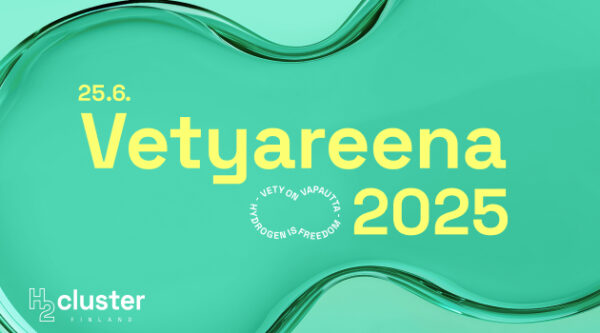Atolli Aims to Lead a Sustainable Hydrogen Economy with Engineering Plastics
With companies like Atolli, Finland has everything it needs to become a leading international provider in modern hydrogen infrastructure. The key lies in underutilized engineering plastics, which offer long-lasting and eco-friendly solutions along the hydrogen value chain.
Engineering Plastics: The Enabler of Clean Water
In future, most hydrogen will be sourced from water, specifically seawater. This salty, impure water requires purification and storage, demanding durable and cost-effective materials.
“Green hydrogen” is typically produced through electrolysis, where electricity splits water into oxygen and hydrogen. For that, we need clean water. Plastic pipelines are ideal for that, from water intake to purification systems. And the more clean water we have, the more hydrogen we can produce,” says Christian Sundberg, Business Developer and Partner at Atolli.
Plastic is widely used for clean water applications, such as pipelines and bottles, due to its resistance to bacterial growth and superior durability compared to glass and metal. “Every industrial plant worldwide employs plastic for pure water applications. Since drinking water pipes are polyethylene, why wouldn’t we use it in the hydrogen economy?” Sundberg asks.
Public discourse often forgets industrial plastic, focusing on improperly disposed waste like ocean-bound plastic straws. But, Sundberg points out, “Plastic waste is a real environmental issue, yet it’s mostly a waste management problem tied to human negligence. Industrial plastics like polyethylene are easy to recycle and, engineering and packaging plastics are two very different things.”
When used properly, plastic is essential and sustainable across industries. “If we, for example, stopped using plastic in the healthcare industry, mortality rates would rise dramatically”, Sundberg says.
Why Isn’t Plastic More Widely Used in the Hydrogen Economy?
Sundberg also contemplates this question.
Traditionally, hydrogen pipelines have been made from metal to withstand high pressures and temperatures. But metal has limited chemical resistance, corrodes in saltwater, and rusts in pure water. Modern hydrogen production, however, operates at low pressures, ideal for plastic.
“High-pressure and high temperature pipelines need metal, but for everything else, plastic is the better choice”, says Sundberg.
Engineering plastics are resistant to rust in pure water and corrosion in saline water. Their durability against chemicals makes them ideal for demanding environments. For example, PE100-RC is optimal for seawater handling, while PP and PVDF pipes suit ultra-pure water (UPW) production. Other high-performance plastics like FEP or ECTFE are ideal for handling of the electrolytes used in Alkaline Electrolyzers. Plastic production is also energy-efficient, lightweight, and insulated, reducing carbon footprints and costs.
In the Baltic Sea and global marine regions, plastic pipelines could extend infrastructure lifespan, reduce maintenance costs, and lower carbon footprints. “We should consider the carbon footprint of the materials. Plastic is also the more affordable choice”, Sundberg adds.
Harnessing Finland’s Plastic Expertise for Hydrogen Innovation
Sundberg stresses the need to shift perspectives: “We want people to explore alternatives. In Finland even engineering firms and policymakers don’t fully seem to understand plastic’s qualities and benefits.”
“We are pioneers in plastic technologies, but as we advance in hydrogen production, plastic is suddenly overlooked. Why?”
Beyond expertise in plastics, Finland’s renewable resources, geographical location, and innovative environment provide a foundation to be a global leader in green hydrogen infrastructure. Companies like Atolli could be involved in nearly every stage of clean water and hydrogen production.
“At Atolli, we’re experts in all aspects of plastic, not just pipelines,” Sundberg emphasizes. “We offer turnkey solutions, from initial designs to vessel’s and pipesystems infrastructure for hydrogen production.”
“If you want to produce hydrogen from water, contact us. Together with our partners, like Agru, we know how to extend the lifespan of every hydrogen production stage by choosing the right material for the right purpose.”
The Right Material for the Right Purpose – Three Key Takeaways
- Plastic pipelines provide sustainable solutions and reduce the hydrogen economy’s carbon footprint by being corrosion-resistant, lightweight, and energy-efficient to produce. These traits make them an optimal choice for water purification, storage, and low-pressure hydrogen applications.
- Engineering plastics differs from everyday plastic, and while a significant amount is produced and used across industries, it remains underutilized in the hydrogen economy.
- Finland and companies like Atolli, as leaders in plastic technology, have the potential to be at the global forefront of sustainable hydrogen infrastructure.




